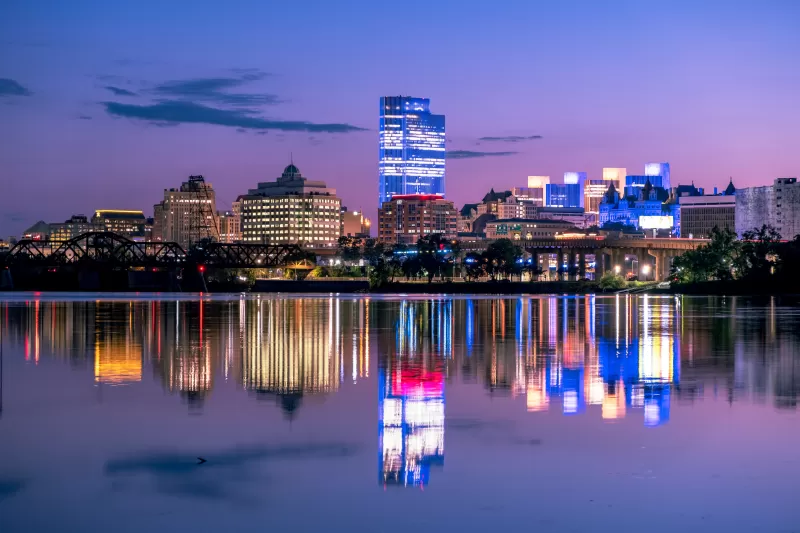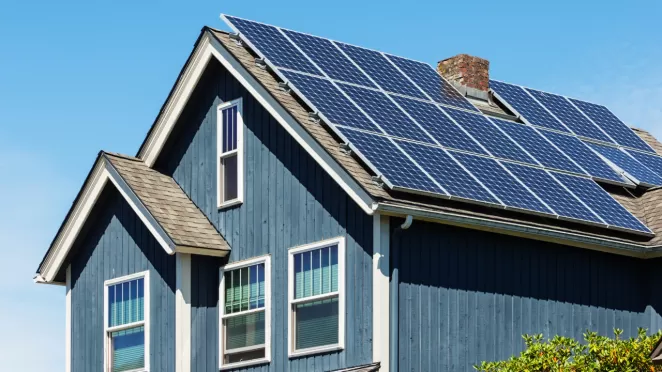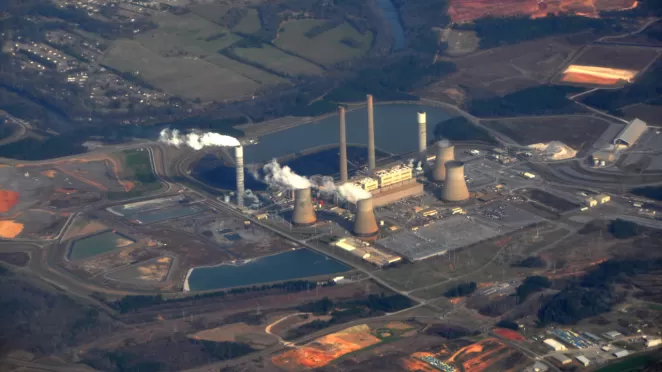
New York recently made history when it became the first state to pass ambitious legislation that will require most new buildings to be all-electric.
The law, negotiated as part of the state budget deal, underscores the importance of tackling buildings in order to meet our climate goals and sets an important precedent for the rest of the country. Along the way, state leaders want to show how eliminating fossil fuels from buildings can also save people money and provide a healthier environment in which to live, work, and learn.
“I’m really excited by the convergence of local, state, and federal action to support our transition away from fossil fuels and towards a low-carbon future,” said Louise Yeung, chief climate officer in New York City’s Office of the Comptroller. “This is such a unique opportunity where our legislative action at all levels of government is aligning to facilitate this energy transition.”
Buildings account for roughly one-third of the state’s greenhouse gas (GHG) emissions, largely the result of burning fossil fuels for space and water heating. Given that sizable share, the new law is an important complement to additional city, state, and federal action all aimed at tackling one of the most historically challenging sectors. Decarbonizing New York’s building stock will be a significant undertaking, but one that can also bring a wealth of knowledge and economic opportunity.
![]()
The road to healthier, cleaner buildings
The All-Electric Building Act requires all new buildings seven stories or lower to be zero emissions by 2026, and all other new buildings by 2029. This means new buildings will be constructed with efficient, electric appliances – like clean, electric heat pumps and induction stoves – and no polluting fossil fuel systems.
While the law is a significant policy achievement in itself, it didn’t come about in a vacuum. New York State’s Climate Leadership and Community Protection Act, passed in 2019, set a number of aggressive emissions reduction targets that spurred additional action in every sector.
That same year, New York City passed Local Law 97, which set greenhouse gas and energy efficiency limits for larger buildings within the city. The law, which goes into effect next year, is projected to cut GHG emissions from the buildings sector 40 percent by 2030 and 80 percent by 2050.
Then, in 2021, the city followed with Local Law 154, which phases out fossil fuels in new buildings starting in 2024. Extending that phaseout to the whole state saves an estimated 4 million metric tons of CO2 by 2040, on top of the projected carbon savings at the city level, according to RMI analysis.
And on the federal level, the passage of the Inflation Reduction Act (IRA) last year is “a game-changer,” according to Yeung. The tax credits available to individual homeowners as well as building owners can make a significant difference in the adoption of solar, EV charging, electric appliances, and more.
A new center of excellence
The transition to zero-emission buildings will yield numerous benefits within New York and beyond.
“First of all, gas leaks and it’s bad for health and bad for the environment,” said Jeff Perlman, founder and chief strategy officer at Bright Power. Gas stoves release numerous harmful pollutants, like nitrogen dioxide (NO2) and carbon monoxide, that are known to damage human health. The health impacts stemming from pollution are especially pronounced in communities of color.
A recent pilot project conducted by We Act for Environmental Justice replaced gas stoves with induction stoves in affordable housing units in the Bronx. On average, NO2 concentrations were measured to be 190 percent higher in the kitchens with gas stoves. After the conversions, researchers documented a 35 percent reduction in NO2 emissions in the homes with induction stoves.
Giving residents access to cleaner and more efficient housing, and freeing them from dependence on volatile fossil fuels that pollute the air, can also make a meaningful difference when it comes to monthly utility bills. As energy costs rise for many New Yorkers, “these kinds of energy efficiency upgrades can offer really significant savings for people on their utility bills,” Yeung said.
Another benefit that doesn’t get as much attention, according to Perlman, is the increased comfort that accompanies the switch to electric appliances. “Classic New York buildings are heated to the coldest person,” Perlman said. “One additional benefit you get when you electrify is room-level control. So if one person wants it warmer and one person wants it colder, you now have zones, and each room or zone can be set to a different temperature.”
![]()
Building the expertise and workforce to power this transition also represents a substantial economic opportunity. Yeung pointed to an analysis from the Urban Green Council that found retrofits associated with Local Law 97 compliance have the potential to grow the retrofit market in New York City 13 times per year, generate $20 billion of economic activity, and create up to 141,000 local jobs.
“We can build the know-how in the industry that can bring this to the rest of the country,” Perlman said. “It's an opportunity for us to build on the brain trust that we have in New York to really become the leader of these solutions for the country.”
Empire State leading the way
Across the country, over 100 local governments have advanced policies that require or encourage the shift from fossil fuels to all-electric buildings. With its new statewide law prohibiting fossil fuels in most new buildings, all eyes will now be on New York as policymakers, architects, engineers, and installers work to both construct the buildings of the future and modernize those that already exist.
Local leaders are clear that much of the hard work is just beginning, but they’re energized by the prospect of creating the necessary technical expertise and policy implementation framework and the positive ripple effects that can have.
“There are a lot of lessons we're learning along the way. That's part of the territory of going first sometimes, for better or for worse,” Yeung said. “But I'm really excited that we have some templates for what this kind of ambitious climate legislation can look like at both the municipal and the state level, and we've already seen other cities following suit.”
At the end of the day, “this is not just an onerous requirement,” said Perlman. “This is an opportunity – it's a business opportunity and it's a competitive advantage.”

Latest
More articles >
